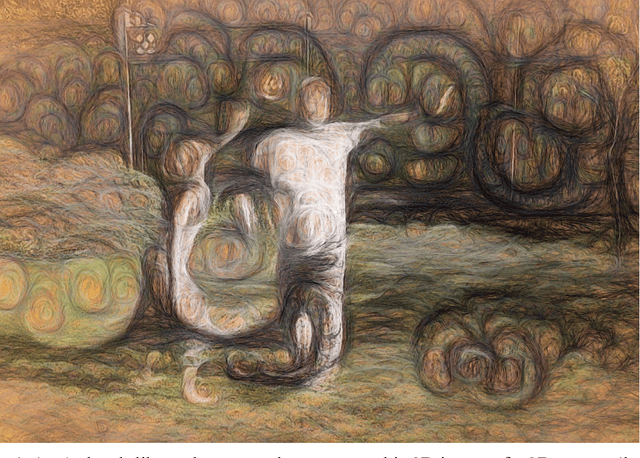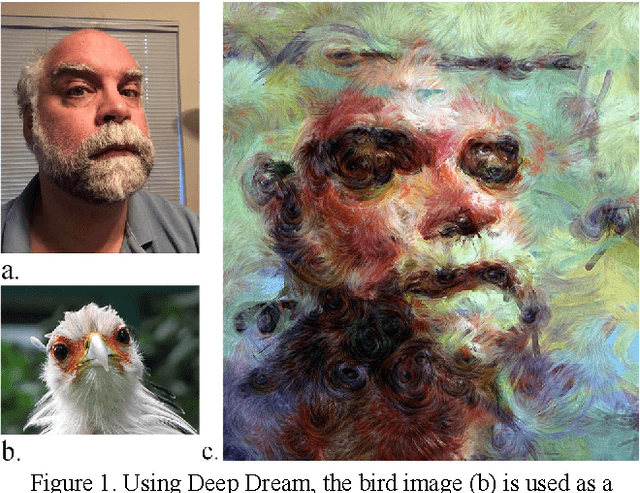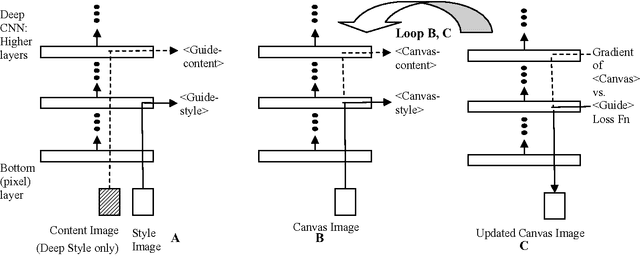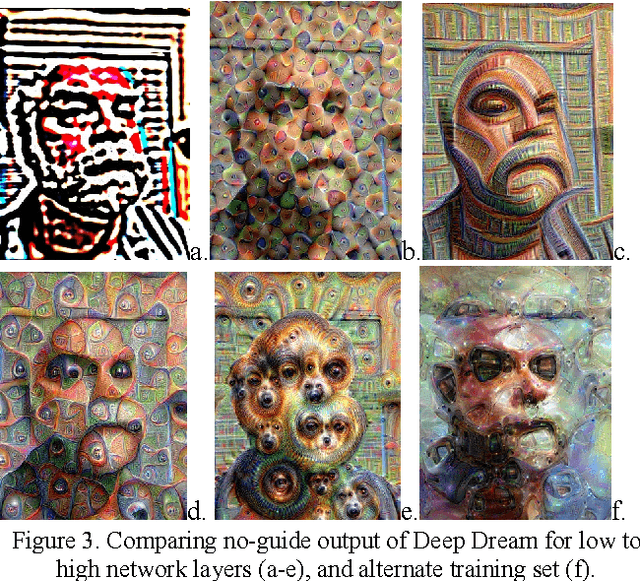Graeme McCaig
Informing Artificial Intelligence Generative Techniques using Cognitive Theories of Human Creativity
Dec 11, 2018



Abstract:The common view that our creativity is what makes us uniquely human suggests that incorporating research on human creativity into generative deep learning techniques might be a fruitful avenue for making their outputs more compelling and human-like. Using an original synthesis of Deep Dream-based convolutional neural networks and cognitive based computational art rendering systems, we show how honing theory, intrinsic motivation, and the notion of a 'seed incident' can be implemented computationally, and demonstrate their impact on the resulting generative art. Conversely, we discuss how explorations in deep learn-ing convolutional neural net generative systems can inform our understanding of human creativity. We conclude with ideas for further cross-fertilization between AI based computational creativity and psychology of creativity.
* 18 pages; 6 figures. arXiv admin note: substantial text overlap with arXiv:1610.02478
Deep Convolutional Networks as Models of Generalization and Blending Within Visual Creativity
Oct 08, 2016



Abstract:We examine two recent artificial intelligence (AI) based deep learning algorithms for visual blending in convolutional neural networks (Mordvintsev et al. 2015, Gatys et al. 2015). To investigate the potential value of these algorithms as tools for computational creativity research, we explain and schematize the essential aspects of the algorithms' operation and give visual examples of their output. We discuss the relationship of the two algorithms to human cognitive science theories of creativity such as conceptual blending theory and honing theory, and characterize the algorithms with respect to generation of novelty and aesthetic quality.
 Add to Chrome
Add to Chrome Add to Firefox
Add to Firefox Add to Edge
Add to Edge